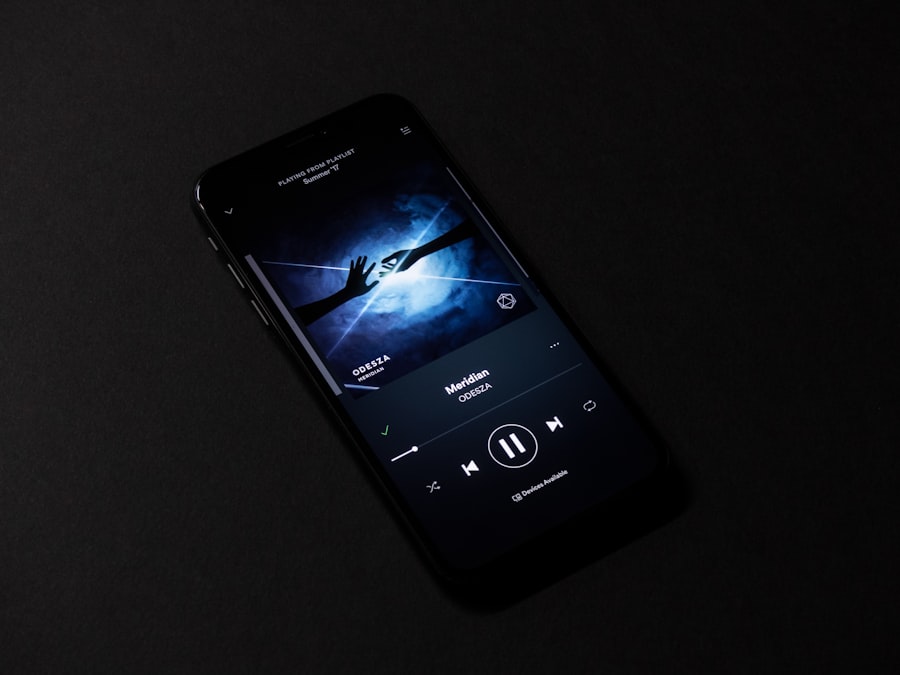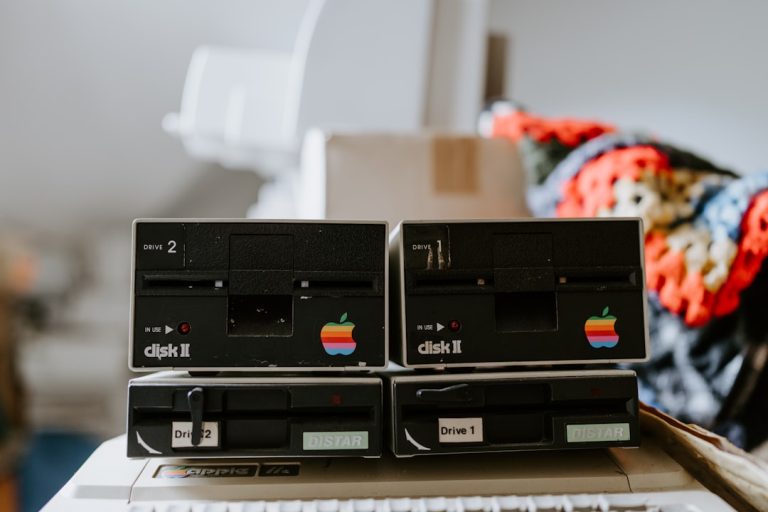
The music streaming industry has undergone a seismic shift over the past decade, evolving from a niche market to a dominant force in how consumers access and enjoy music. As of 2023, platforms like Spotify, Apple Music, and Amazon Music have established themselves as household names, fundamentally altering the way artists distribute their work and how listeners engage with it. The rise of streaming services has been fueled by the proliferation of smartphones and high-speed internet, allowing users to access vast libraries of music at their fingertips.
This convenience has led to a significant decline in physical album sales and digital downloads, with streaming now accounting for the majority of music industry revenue. In this landscape, competition is fierce. Each platform strives to differentiate itself through unique features, exclusive content, and user-friendly interfaces.
For instance, Spotify has gained traction with its algorithm-driven playlists and social sharing capabilities, while Apple Music emphasizes its curated playlists and integration with the broader Apple ecosystem. The emergence of niche platforms catering to specific genres or demographics further complicates the competitive environment. As a result, understanding consumer preferences and behaviors has become paramount for these services, as they seek to capture and retain subscribers in an increasingly crowded marketplace.
Key Takeaways
- The music streaming landscape is highly competitive, with major players like Spotify, Apple Music, and Amazon Music dominating the market.
- To maximize subscription and ad revenue, music streaming platforms should offer a variety of subscription options, including family plans and student discounts, and utilize targeted advertising strategies.
- Leveraging data and analytics is crucial for providing personalized music recommendations and enhancing user experience.
- Social media and viral marketing can be powerful tools for promoting music streaming platforms and engaging with users.
- Creating exclusive content and partnerships with artists, record labels, and brands can help music streaming platforms stand out and attract new users.
Maximizing Subscription and Ad Revenue
Subscription Models and Advertising Revenue
Subscription models typically offer users ad-free experiences in exchange for a monthly fee, while ad-supported tiers provide free access to music but generate income through advertisements. The balance between these two revenue streams is crucial; many platforms have adopted a freemium model that allows users to choose between free access with ads or premium subscriptions without interruptions.
Innovative Pricing Strategies
Innovative pricing strategies can also play a significant role in revenue maximization.
By offering tiered pricing structures, platforms can cater to various demographics, ensuring that they capture a broader audience.
Partnerships and Bundled Services
Additionally, partnerships with telecommunications companies can provide bundled services that enhance value for consumers while driving subscriber growth. This multifaceted approach not only increases revenue but also fosters brand loyalty among users who appreciate the flexibility and options available to them.
Leveraging Data and Analytics for Personalized Recommendations

In an era where data is often referred to as the new oil, music streaming services are uniquely positioned to harness vast amounts of user data to enhance their offerings. By analyzing listening habits, preferences, and behaviors, platforms can create personalized recommendations that resonate with individual users. This level of customization not only improves user satisfaction but also encourages longer listening sessions and increased engagement with the platform.
For instance, Spotify’s Discover Weekly playlist is a prime example of leveraging data analytics to deliver tailored content. By utilizing machine learning algorithms that analyze user behavior alongside collaborative filtering techniques—where users with similar tastes influence each other’s recommendations—Spotify can curate playlists that feel uniquely personal.
As competition intensifies, the ability to provide personalized experiences will be a key differentiator for streaming services.
Harnessing the Power of Social Media and Viral Marketing
| Metrics | 2019 | 2020 | 2021 |
|---|---|---|---|
| Number of Social Media Followers | 10,000 | 15,000 | 20,000 |
| Engagement Rate | 5% | 7% | 10% |
| Number of Viral Campaigns | 3 | 5 | 8 |
| Reach of Viral Campaigns | 1,000,000 | 2,000,000 | 5,000,000 |
Social media has become an indispensable tool for music streaming platforms looking to expand their reach and engage with audiences. The viral nature of social media allows for rapid dissemination of content, making it an ideal medium for promoting new releases, playlists, and artist collaborations. Platforms like TikTok have revolutionized how music is discovered and consumed; songs that gain traction on TikTok often see a corresponding surge in streaming numbers across other platforms.
Moreover, strategic partnerships with influencers can amplify marketing efforts significantly. By collaborating with popular social media figures who resonate with target demographics, streaming services can tap into established fan bases and create buzz around new content. For example, when artists release new singles or albums, leveraging social media challenges or trends can encourage user-generated content that promotes the music organically.
This grassroots approach not only enhances visibility but also fosters a sense of community among listeners who share their experiences online.
Creating Exclusive Content and Partnerships
In an effort to stand out in a saturated market, many music streaming platforms are investing heavily in exclusive content and partnerships. This strategy not only attracts new subscribers but also retains existing ones by offering unique experiences that cannot be found elsewhere. Exclusive album releases, live concert streams, and behind-the-scenes documentaries are just a few examples of how platforms can provide added value to their users.
For instance, Apple Music has made headlines by securing exclusive rights to high-profile album releases from major artists like Taylor Swift and Drake. These exclusive deals create a sense of urgency among fans who want immediate access to new music, driving subscriptions as listeners flock to the platform for content they cannot find on competitors’ services. Additionally, partnerships with brands for co-branded playlists or promotional events can further enhance user engagement while providing additional revenue opportunities through sponsorships.
Expanding into Emerging Markets and Diversifying Revenue Streams

As the global demand for music streaming continues to grow, emerging markets present significant opportunities for expansion. Countries in regions such as Southeast Asia, Africa, and Latin America are experiencing rapid internet penetration and smartphone adoption, creating fertile ground for music streaming services to establish a foothold. However, entering these markets requires a nuanced understanding of local cultures, preferences, and economic conditions.
To successfully penetrate these markets, companies must adapt their offerings to meet local needs. This may involve creating localized content that resonates with regional audiences or offering flexible pricing models that accommodate varying income levels. Additionally, diversifying revenue streams beyond subscriptions and advertising can enhance sustainability in these markets.
For example, partnerships with local artists for exclusive content or merchandise sales can create additional income sources while fostering community engagement.
Enhancing User Experience and Retention
User experience is paramount in the competitive landscape of music streaming services. A seamless interface that allows users to easily navigate through vast libraries of content is essential for retaining subscribers. Features such as intuitive search functions, personalized playlists, and offline listening capabilities contribute significantly to overall satisfaction.
Moreover, ongoing engagement strategies are crucial for retention. Regularly updating playlists based on seasonal trends or user feedback can keep content fresh and relevant. Additionally, incorporating gamification elements—such as rewards for sharing playlists or discovering new artists—can enhance user interaction with the platform.
By prioritizing user experience and continuously innovating based on feedback and trends, streaming services can foster loyalty among their subscribers.
Navigating Licensing and Copyright Challenges
The music streaming industry is fraught with complex licensing and copyright challenges that companies must navigate carefully. Securing the rights to stream music involves negotiations with record labels, publishers, and artists themselves, each of whom has their own expectations regarding compensation and usage rights. The intricacies of these agreements can vary significantly across different regions and genres, making it essential for streaming platforms to have robust legal frameworks in place.
Additionally, as the industry evolves, so too do the challenges associated with copyright infringement and fair use. With the rise of user-generated content on platforms like TikTok and YouTube, questions surrounding licensing agreements have become increasingly prominent. Streaming services must remain vigilant in ensuring compliance with copyright laws while also advocating for fair compensation models that benefit artists without stifling innovation within the industry.
Balancing these interests is critical for maintaining positive relationships with stakeholders while fostering a sustainable ecosystem for music distribution. In conclusion, the music streaming landscape is dynamic and multifaceted, requiring companies to adopt innovative strategies across various domains—from maximizing revenue streams to enhancing user experience and navigating legal complexities. As technology continues to evolve and consumer preferences shift, those who can adapt swiftly will thrive in this ever-changing environment.
If you are interested in learning more about maximizing revenue from music streaming, you may want to check out the article “Hello World” on Sersea Media’s blog. This article discusses the importance of establishing a strong online presence and utilizing various digital marketing strategies to increase visibility and engagement. By implementing these tactics, musicians and artists can effectively monetize their music streaming platforms and maximize their revenue potential. To read more about this topic, visit this article on Sersea Media’s website.
FAQs
What is music streaming?
Music streaming is the process of listening to music over the internet without downloading the files to your device. It allows users to access a vast library of songs and albums on-demand.
How do artists make money from music streaming?
Artists make money from music streaming through royalties, which are payments made to them based on the number of streams their songs receive. The amount of royalties earned per stream can vary depending on the streaming platform and the artist’s contract.
What are some strategies for maximizing revenue from music streaming?
Some strategies for maximizing revenue from music streaming include promoting your music on social media and other platforms, collaborating with other artists, releasing new music regularly to keep fans engaged, and leveraging data and analytics to understand your audience and target your marketing efforts.
What are some common challenges artists face in maximizing revenue from music streaming?
Some common challenges artists face in maximizing revenue from music streaming include the low per-stream royalty rates, the difficulty of standing out in a crowded market, and the need to constantly engage with fans and promote their music to maintain a steady stream of income.
Are there alternative revenue streams for artists besides music streaming?
Yes, there are alternative revenue streams for artists besides music streaming, such as live performances, merchandise sales, licensing their music for use in films, TV shows, and commercials, and selling physical copies of their music.


